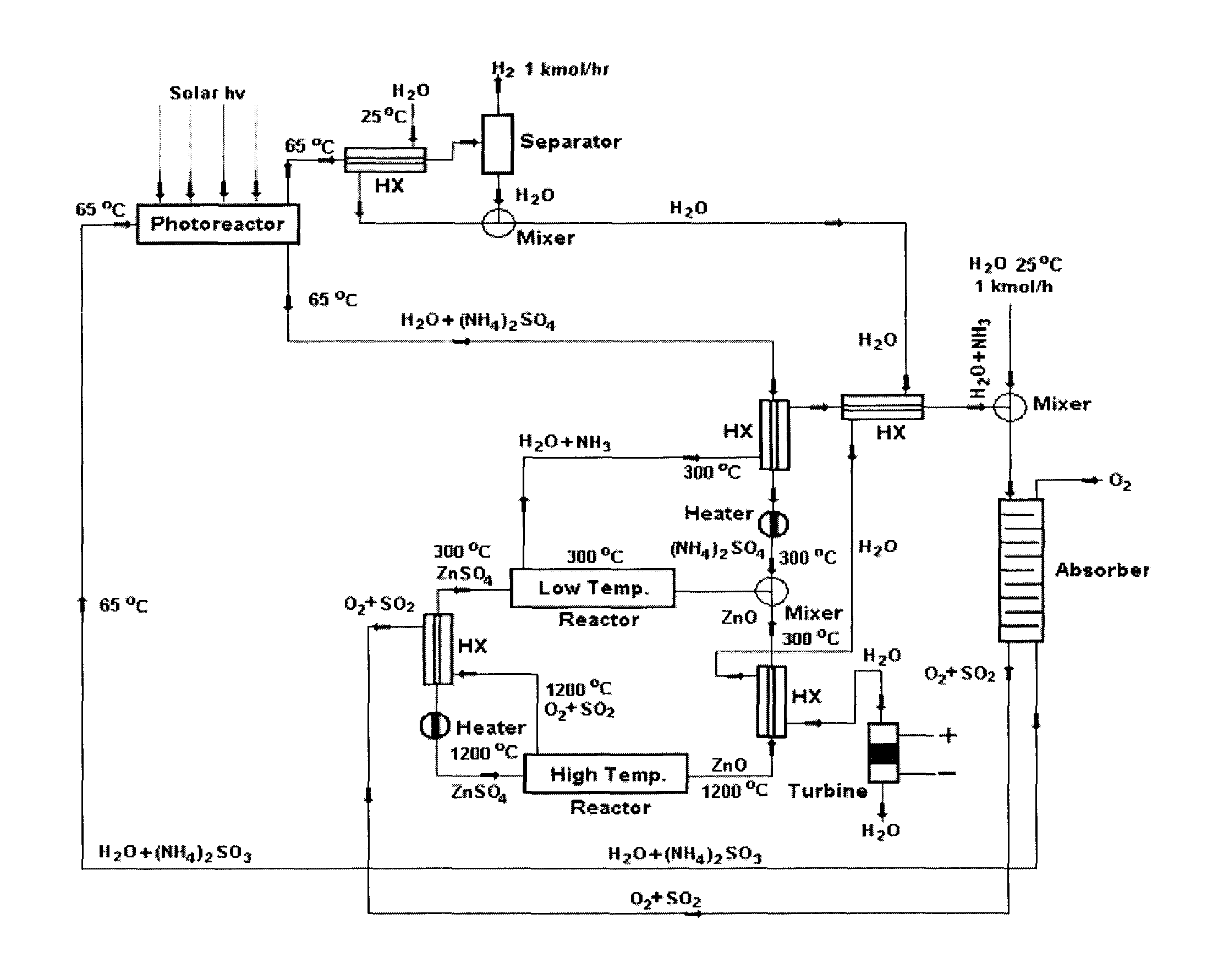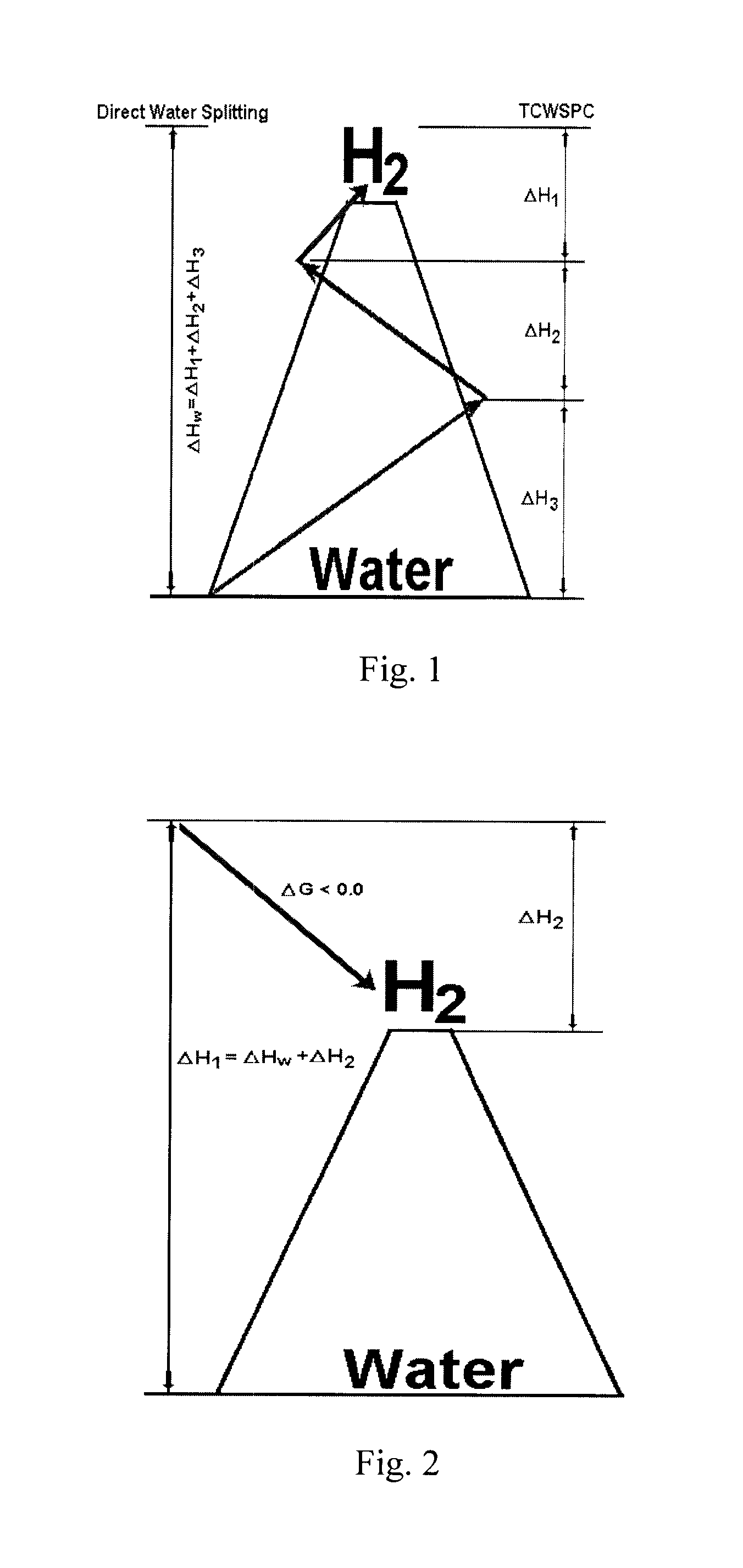Solar metal sulfate-ammonia based thermochemical water splitting cycle for hydrogen production
a technology of solar metal sulfate and ammonia, which is applied in the direction of electrolytic organic production, instruments, oxygen/ozone/oxide/hydroxide, etc., can solve the problems of not having sufficient redox potential to engender, no information is given regarding the photo-electrode life in their work, and high-efficiency pv cells such as multi-junction cells based on gallium arsenide or indium selenide are still too expensiv
- Summary
- Abstract
- Description
- Claims
- Application Information
AI Technical Summary
Benefits of technology
Problems solved by technology
Method used
Image
Examples
Embodiment Construction
[0057]Before explaining the disclosed embodiments of the present invention in detail it is to be understood that the invention is not limited in its application to the details of the particular arrangements shown since the invention is capable of other embodiments. Also, the terminology used herein is for the purpose of description and not of limitation.
[0058]As previously discussed, thermochemical water splitting cycle (TCWSC) efficiency is a function of efficiencies of both hydrogen and oxygen production steps according to equation (j). Solar energy consists of both photonic and thermal energies. The efficacy of any solar driven water splitting cycle depends upon the ability of the cycle to utilize as broad range of solar spectrum as possible—i.e. being able to exploit both the photonic (UV / visible) and thermal components of the solar radiation. Degradation (or thermallization) of the high energy portion of solar radiation to thermal heat, as is the case with purely thermochemical...
PUM
| Property | Measurement | Unit |
|---|---|---|
| Temperature | aaaaa | aaaaa |
| Molar density | aaaaa | aaaaa |
| Cooling rate | aaaaa | aaaaa |
Abstract
Description
Claims
Application Information
 Login to View More
Login to View More - R&D
- Intellectual Property
- Life Sciences
- Materials
- Tech Scout
- Unparalleled Data Quality
- Higher Quality Content
- 60% Fewer Hallucinations
Browse by: Latest US Patents, China's latest patents, Technical Efficacy Thesaurus, Application Domain, Technology Topic, Popular Technical Reports.
© 2025 PatSnap. All rights reserved.Legal|Privacy policy|Modern Slavery Act Transparency Statement|Sitemap|About US| Contact US: help@patsnap.com



